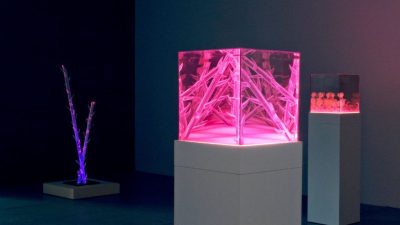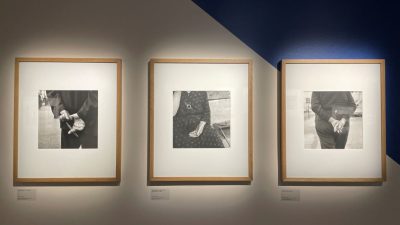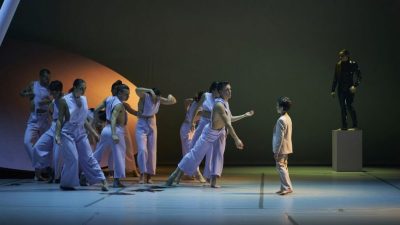I like the English description of the dance performance Girls, especially the alliteration part where it states that the girls are on this stage to please, to protest, to pacify. I still wonder, however, how could “to protest” completely disappear in the Hungarian translation and be replaced with “to be flirtatious and attractive”. Talking to director-choreographer Roy Assaf once again persuaded me that this piece is not about accepting stereotypes without any question (for instance, if it’s about girls, then they surely have to be flirtatious and attractive), but to examine taboos and get beyond them. We also discussed the constellation of male and female perspectives in the piece, the role of problematic topics in art, and also what you might have thought after seeing the picture above: namely, why do the Girls wear red?
In 2018, Hungarian audience could already see two of your pieces, Girls and Boys at the SZIGET festival. This time, it is Girls which will be presented in the Trafó. Why exactly this one (and not Boys or both again)?
Bringing Girls to the Trafó wasn’t my decision but Trafó’s artistic director Gyuri Szabó. But otherwise, Girls has changed a lot since 2018. As with all my works, I consider it a continuous process and with Girls in particular there has been a sense of great discovery over the past year. What was seen in SZIGET is distinct from what will be seen now.

Who are your dancers? From where do you know them, since when you have been working together?
Michal Geyer, Maya Feldman, Liel Fibak, Roni Argaman and Ariel Freedman are five incredible artists who are going to perform in the Trafó. Some of them I met by teaching in their schools, while others I met through colleagues and friends. I have known Ariel Freedman for seven years and she is the only member who danced in the premiere of Girls in 2013. Maya joined the cast in 2018 and Michal, Roni and Liel joined us in 2019.
Why do they wear red?
Red was a decision that surfaced when it became clear that this work confronts cliches and stereotypes of femininity, of girlhood and of womanhood. It is one of the ways in which we do not downplay this confrontation, but offer it without apology.
It seems to be tricky in today’s society if a male artist wants to show how women are – feminist critique often claims that it is time for women to represent themselves instead of reproducing what men say/think/expect. How did you manage to deal with this?
Women have been representing themselves successfully for years. but I wish that I and all the artists out there — those who see themselves as female, those who see themselves as male, and those who feel that their gender can’t be defined by social convention — would reflect on whichever subject interests them, without limit on the ways they can express themselves, no sacred cows they cannot kick or sensitive issues they cannot confront and embrace.
How much did your dancers actively cooperate in the process?
The dancers with whom I collaborate are sensitive, generous, open-hearted and creative human beings. The room for them to express themselves and to shape and influence the piece is enormous.
Similarly, the description of the show claims that it is about “stubborn cliches of femininity”, “as if taken from the catalogue of male fantasy”. Do you think Girls can provoke a discussion of these cliches, or show them as they are, or maybe even change them…?
Girls confronts and embraces those cliches in the hope that it will deepen and personalize the observation about the expectations and demands we as society have from women. I believe the most important work this piece can do is to bring viewers into proximity (perhaps uncomfortable proximity) of their own habits of thought.

The show features a lot of different pieces of music. Who chose them, and why exactly these pieces?
While I make the final decisions about what music enters the work, it is always an open process wherein ideas and suggestions come from many people, both those directly and indirectly involved in the creation. Making those choices has a lot to do with understanding what creates the right tension between the shapes we make with our bodies and the sound environment in which we make those movements. The result is the content. They all depend on each other, and they are all subject to change if the elements are not coming together to create the content that feels instinctively right.



























Comments